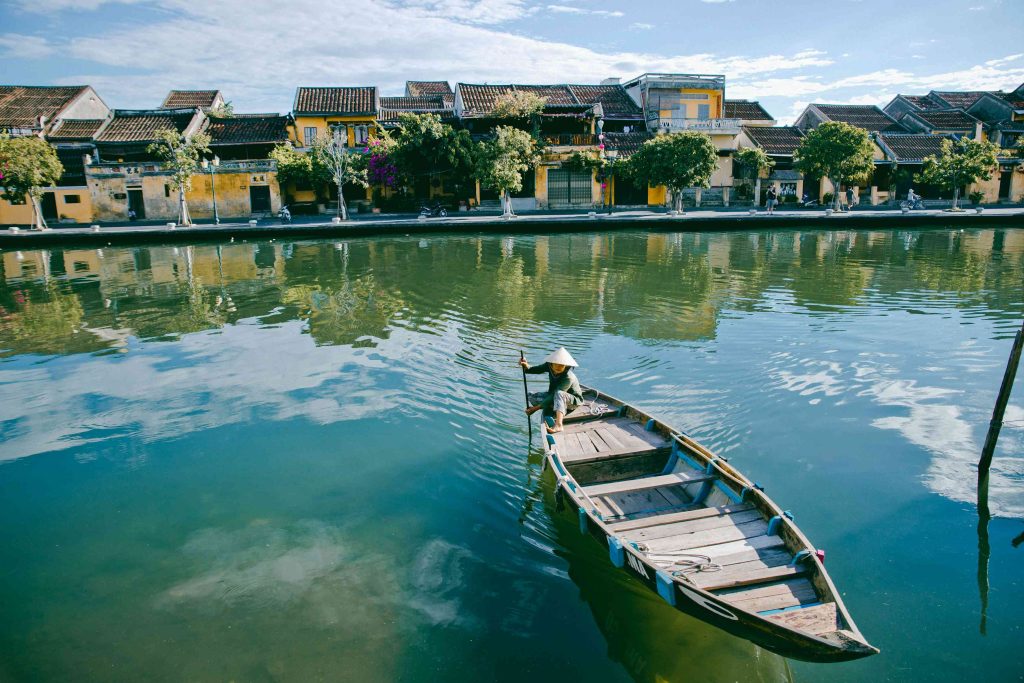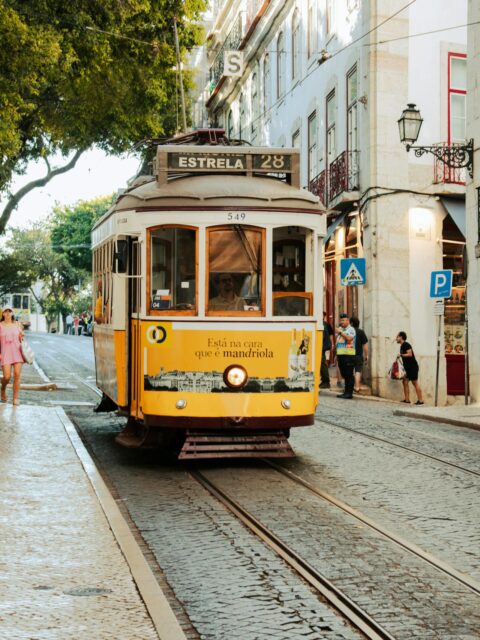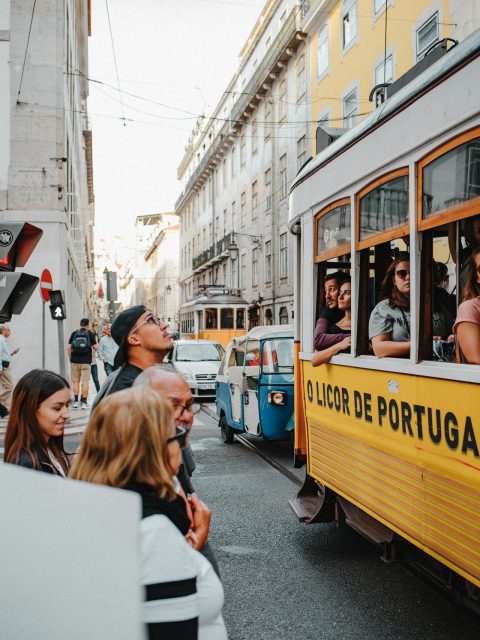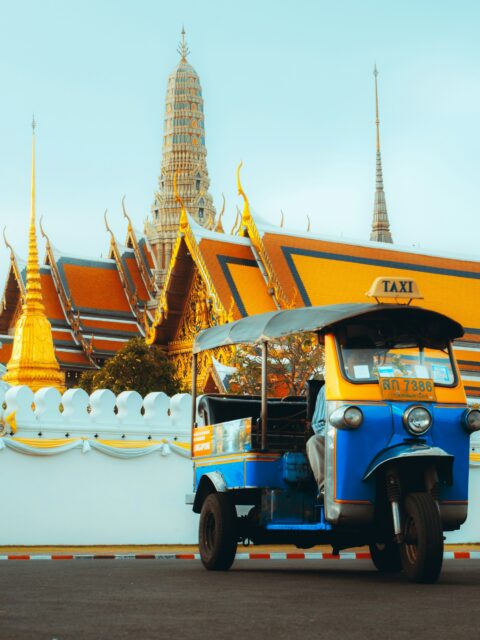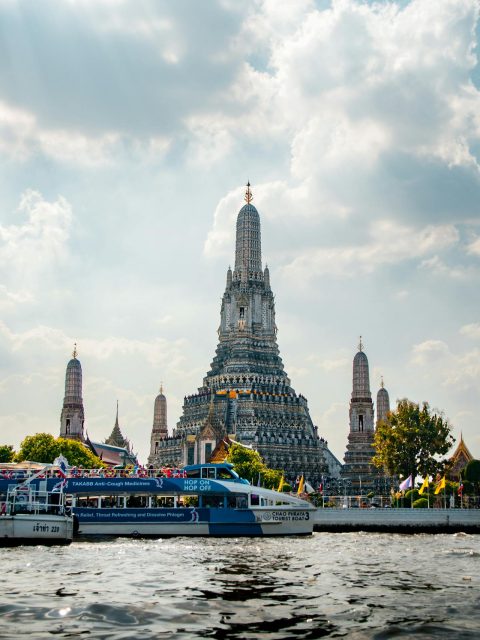Best Places to Visit in Vietnam in 3 Weeks
Recently, my dear friend and I began outlining our travel adventures for the year, and Vietnam swiftly climbed to the top of our bucket list. Inspired by tales from her family and friends, we were captivated by the idea of exploring Ha Long Bay and the enchanting town of Hoi An. Both destinations promised unique experiences that perfectly blended history, culture, and natural beauty.
Eager to dive into the planning, we determined April would be ideal, hoping to catch Vietnam in its sunniest despite its reputation for overcast skies. Vietnam is an enormous country, home to tropical forests, limestone cliffs, and exhilarating mountain roads. Beyond nature, the cities are rich with culture and fascinating history. And perhaps best of all, we were excited to eat our way through the best places to visit in Vietnam, with street food as the ultimate highlight of this flavorsome journey.
Chapters
3 week travel route vietnam
Follow along to discover not just the best places to visit in Vietnam, but also some personal hidden gems we uncovered during our 3 weeks in Vietnam. This guide will outline the best places to go in Vietnam that you should add to your own bucket list, whether you’re a fan of nature, history, or food.
Traveling in Vietnam is an adventure in itself, and the most common way to get around is by bus or train. Direct flights between destinations are limited, making ground transportation a great way to experience the landscape.
Day 1 – 3: Hanoi
Begin your Hanoi travel adventure in the bustling capital of Vietnam! This historic city, with the serene Hoan Kiem Lake at its heart, is renowned for offering some of the best street food in the world.
Spend at least two days soaking in the sights, sounds, and flavors of this lively and vibrant city. Wander through the narrow streets of the Hanoi Old Quarter, lined with French colonial architecture, and experience the thrill of crossing the city’s busy roads filled with motorcycles.
Hanoi is also home to Noi Bai International Airport, which offers both domestic and international flights, making it an ideal starting point for your Vietnam travels. Whether you’re keen on visiting must-see historical sites in Hanoi, like the Temple of Literature, or simply strolling by Hoan Kiem Lake, Hanoi offers something for everyone.
Where to Stay in Hanoi
For accommodation, you’ll find excellent value in Hanoi’s guesthouses and hotels. Staying in the Old Quarter or near Hoan Kiem Lake will give you easy access to many of the things to do in Hanoi, allowing you to explore the city on foot.
Day 4-5: Ha Long Bay
Located about 4.5 hours from Hanoi by car, Ha Long Bay is a must-see destination in any Vietnam itinerary. Known for its thousands of islands and towering limestone karsts, this UNESCO World Heritage site is a natural wonder. You can explore the bay either from the mainland, where there are accessible beaches, or by joining one of the many Ha Long Bay tours that take you deeper into the more remote areas of the bay.
For our trip, we chose a boat tour to fully experience the stunning scenery. Although I’m not usually a fan of organized tours, this allowed us to visit parts of Ha Long Bay that would otherwise be difficult to reach. We sailed past impressive limestone formations, enjoyed peaceful Ha Long Bay sunset views, and had a memorable lunch on a private beach. However, the strict schedule and organized activities did feel a bit limiting at times.
If you’re planning a visit, there are different options available, including best overnight cruises in Ha Long Bay or day tours. I recommend staying at least two nights to truly appreciate the natural beauty of Ha Long Bay. During our tour, we explored areas like Lan Ha Bay and visited the famous Sung Sot Cave. Some cruises also offer kayaking and visits to floating villages, making the experience even more enriching.
Why Ha Long Bay Instead of Tam Coc?
We chose Ha Long Bay over Tam Coc because of its larger scale and more diverse activities. While Tam Coc offers peaceful river cruises and beautiful rice fields, Ha Long Bay provides the chance to explore stunning limestone formations, caves, and floating villages, with activities like kayaking and beach dining. This made Ha Long Bay a better fit for our itinerary.
Tip: Most Ha Long Bay cruises include return transfers from Hanoi, so you can relax and enjoy the journey without worrying about transportation. You might want to stay an additional night in Hanoi after the tour before continuing with your travels.
Day 6 – 8: Sapa
Your journey to Sapa begins with a scenic drive or overnight train from Hanoi, taking you to one of Vietnam’s most stunning mountain landscapes. Known for its misty mountains, lush valleys, and vibrant ethnic minority cultures, Sapa is a must-visit destination for anyone looking to explore Vietnam’s countryside.
Once in Sapa, spend your days trekking through the region’s famous Sapa rice terraces, visiting remote mountain villages like Lao Chai and Ta Van, where you’ll encounter the local Hmong people. For those seeking a more adventurous experience, head to Fansipan Mountain, often called the “Roof of Indochina.” You can either take the challenging trek to the summit or opt for the Fansipan cable car for a more relaxed route, offering breathtaking views of the entire region.
Sapa trekking tours offer a wide variety of routes, from easy walks through valleys to more challenging hikes across rugged terrain. Some of the best trekking routes in Sapa pass through the picturesque Muong Hoa Valley, where you can admire the incredible beauty of the region’s rice terraces.
After a long day of exploring, staying at a Sapa homestay with a local family offers an authentic cultural experience. Many travelers enjoy the warmth and hospitality of these homestays, where you can learn about the traditional customs of ethnic minority groups.
How to Get to Sapa
- Limousine or bus: You can book a limousine or a bus from My Dinh Bus Station with ticket prices ranging from 230,000 to 350,000 VND (about 9 to 14 USD) per person, depending on the seat class. The travel time is approximately 5-6 hours.
- Train: Another option is to take the Hanoi – Lao Cai train. After a 7-9 hour journey, you will need to take a bus or taxi to reach Sapa’s center. Train ticket prices range from 160,000 to 800,000 VND (about 6 to 31 USD), depending on the seat class and type of train.
- Self-driving: If you prefer driving, you can take the Noi Bai – Lao Cai expressway, then turn onto Road 4D to reach Sapa. The road is generally easy to navigate, but be cautious of speed limits and road signs. During rainy or foggy weather, ensure your tires, brakes, and lights are in good condition. The driving time is about 5-6 hours. It’s recommended to leave Hanoi no later than 12:30 PM to avoid driving in the dark when approaching the pass to Sapa.
Day 9 – 10: Hue
Hue is a city steeped in history, known for its stunning architecture, cultural heritage, and imperial past. Located along the serene Perfume River, Hue is home to the Imperial City, royal tombs, and traditional pagodas, making it a must-visit for those who love history and culture.
The fastest way to get to Hue is by taking a flight from Noi Bai Airport (Hanoi) to Phu Bai Airport (Hue). The flight takes about 1 hour and 15 minutes. Once you land, it’s a short 30-minute drive to the city center.
Start your journey by exploring the Imperial City of Hue, a UNESCO World Heritage site. This vast complex served as the political and cultural heart of Vietnam during the Nguyen Dynasty, housing palaces, temples, and the royal court. Wander through the Imperial Citadel of Hue, admiring its majestic gates, moats, and intricate royal architecture.
Hue is also famous for its peaceful pagodas, such as Thien Mu Pagoda, which stands tall overlooking the Perfume River. This seven-story pagoda is one of the most iconic landmarks in the city and offers a tranquil atmosphere for visitors.
Beyond its historical sites, Hue is also a culinary destination. Don’t miss out on experiencing traditional Hue cuisine, known for its delicate balance of flavors and beautifully presented dishes. A visit to Dong Ba Market is perfect for sampling local dishes such as bun bo Hue and banh khoai.
Day 11: Day Trip to Da Nang
On your journey from Hue to Hoi An, take some time to stop in Da Nang for an unforgettable day trip. The distance from Hue to Da Nang is about 2-3 hours by car or train. However, if you’re looking for a thrilling experience, you can rent a motorbike and take the famous Hai Van Pass. This 21 km pass winds through hills and along the coast, offering some of the most beautiful scenery in Vietnam. At 500 meters above sea level, it’s one of the most breathtaking routes to explore this area.
Traveling from Hue to Da Nang via Hai Van Pass will take about 3-4 hours, depending on your speed and how often you stop to admire the views. If you prefer a faster route or are traveling by car, you can take the Hai Van Tunnel. The Hai Van Tunnel only allows cars and is not accessible to motorbikes, reducing the travel time between Hue and Da Nang to just 1.5-2 hours.
When you arrive in Da Nang, a must-visit destination is Ba Na Hills, located about 25-30 km from the city center. The highlight here is the Golden Bridge, a uniquely designed bridge supported by two giant stone hands, offering a stunning view of the majestic mountains. Additionally, you can experience the world-record-holding Ba Na cable car and explore the French Village with its charming European architecture. Ba Na Hills is the perfect place to end your day trip in Da Nang.
Day 12 – 14: Hoi An
Hoi An is a charming ancient town that has captured the hearts of many travelers with its well-preserved architecture, rich cultural heritage, and vibrant atmosphere. Situated along the Thu Bon River, Hoi An was once a major trading port, and today it stands as a UNESCO World Heritage Site, famous for its lantern-lit streets and historical significance.
During your three days in Hoi An, start by exploring the Hoi An ancient town, where you can wander through ancient streets lined with traditional wooden houses and visit iconic landmarks like the Japanese Covered Bridge. The town’s unique blend of Vietnamese, Chinese, and Japanese influences is evident in its architecture and street life.
In the evenings, head to the Hoi An night market, where the streets come alive with colorful lanterns, local street food, and handcrafted souvenirs. If you’re lucky, your visit might coincide with the famous Hoi An lantern festival, where the town is illuminated by thousands of glowing lanterns floating along the river, creating an enchanting experience.
One of the unique experiences in Hoi An is having tailor-made clothes crafted by skilled local tailors. Whether you’re looking for a custom suit or a casual dress, the tailors of Hoi An are famous for their craftsmanship and speed. Make sure to spend time exploring the local shops to find something truly special.
Day 15-16: Mui Ne
Mui Ne, located near Phan Thiet City, is a popular beach destination known for its long sandy coastlines, colorful fishing villages, and unique sand dunes. It’s the perfect place to unwind and enjoy a mix of adventure and relaxation over two days.
To reach Mui Ne from Da Nang, the most convenient option is to fly from Da Nang to Ho Chi Minh City. After arriving in Ho Chi Minh City, you can take a bus or car to Mui Ne, which takes about 4-5 hours. This combination of air and land travel saves time and offers a comfortable journey.
Start your journey by visiting the Mui Ne sand dunes, which are divided into the Red Sand Dunes and the White Sand Dunes. The Red Sand Dunes, located closer to Mui Ne, offer stunning sunset views and are a popular spot for sandboarding. If you’re looking for a more expansive desert-like landscape, head to the White Sand Dunes, where you can rent an ATV to explore the vast area or simply enjoy the serene beauty of the dunes.
For a more laid-back experience, spend some time at Hon Rom Beach or one of the many Mui Ne beach resorts. These beaches are ideal for relaxing by the ocean or trying out water sports like kite surfing, which Mui Ne is famous for due to its strong winds.
Another must-visit is the Mui Ne fishing village, where you can witness local fishermen bringing in their fresh catches of the day. Nearby, explore Suoi Tien (Fairy Stream), a shallow stream surrounded by striking red and white rock formations. Walking through the cool water of this natural wonder offers a refreshing break from the tropical heat.
Lastly, don’t miss the chance to visit the Po Sah Inu Cham Towers, a remnant of the ancient Cham civilization, which offers a glimpse into the region’s historical and cultural past.
Day 17-18: Ho Chi Minh City
Ho Chi Minh City, also known as Saigon, is a bustling metropolis that seamlessly blends the old and new. With its vibrant street life, historical landmarks, and energetic atmosphere, it’s the perfect place to experience the pulse of modern Vietnam while immersing yourself in its rich history and culture.
Start your visit by exploring some of the city’s most iconic landmarks. The Saigon Notre-Dame Basilica, with its French colonial architecture, is a must-see, as is the Reunification Palace, a symbol of the end of the Vietnam War. Next, head to the War Remnants Museum, where you can learn about Vietnam’s history through powerful exhibits. For a deeper dive into the country’s wartime past, consider a day trip to the Cu Chi Tunnels, a network of underground tunnels used during the Vietnam War.
One of the most exciting ways to experience Ho Chi Minh City is by indulging in its street food scene. Stroll through the bustling markets, including the famous Ben Thanh Market, and sample delicious dishes like pho, banh mi, and fresh spring rolls. Don’t forget to try Vietnamese coffee, a key part of the city’s food culture. After trying Vietnamese coffee, you’ll realize how bland Starbucks coffee can taste.
Day 19-21: Phu Quoc
Phu Quoc Island is a tropical paradise known for its pristine beaches, clear waters, and peaceful atmosphere. Whether you’re looking to relax by the sea, explore underwater life, or dive into local culture, Phu Quoc has something for everyone.
To begin your three-day stay, visit some of the best beaches in Phu Quoc. Sao Beach (Bai Sao) is one of the most stunning spots with its powdery white sand and crystal-clear water. For a quieter setting, head to Long Beach, where you can unwind, enjoy the sunset, or indulge in a beachside massage.
If you love adventure, the island offers fantastic snorkeling and diving opportunities. Explore Phu Quoc’s snorkeling spots, particularly around the An Thoi Islands, where you can dive into colorful coral reefs and witness vibrant marine life. For nature enthusiasts, a visit to Phu Quoc National Park is a must, offering hiking trails through lush forests and a chance to see unique wildlife.
In the evenings, visit the bustling Phu Quoc night market to sample some of the island’s best seafood. For relaxation, take advantage of the luxurious beach resorts where you can enjoy spa treatments and beachfront dining. With so many things to do in Phu Quoc, this island is the perfect place to end your journey through Vietnam.
Where to Stay on Phu Quoc Island
Getting to Phu Quoc is convenient, as the island’s airport is only about a 15-minute drive from the center. Many high-end resorts and hotels offer free airport transfers, so be sure to ask about this service when booking your accommodation.
For accommodation options, Phu Quoc has everything from budget-friendly homestays to international five-star resorts. Luxury hotels like Saigon Phu Quoc Resort and Eden Resort offer rooms starting at 1,500,000 VND (about 60 USD) per night, while mid-range hotels range from 1,000,000 to 1,500,000 VND (about 40 to 60 USD). If you’re on a tighter budget, two-star hotels like Gold Hotel, Lavita Hotel, or Kim Hoa Resort offer rooms from 600,000 to 800,000 VND (about 25 to 32 USD).
How to Get to Phu Quoc
Getting to Phu Quoc is convenient, as the island’s airport is only about a 15-minute drive from the center. The quickest way is by plane, with flights taking just about 1 hour 15 minutes from Tan Son Nhat Airport (Ho Chi Minh City) to Phu Quoc Airport. Many airlines like Vietnam Airlines, VietJet Air, and Bamboo Airways offer frequent flights. If you prefer a more adventurous route, you can take a bus from Ho Chi Minh City to Rach Gia or Ha Tien, followed by a ferry to Phu Quoc, which takes about 2-3 hours depending on the departure point.
What’s Vietnamese food like?
Vietnamese food is celebrated for its fresh ingredients, balanced flavors, and colorful presentation. It often blends herbs, rice, noodles, and lean proteins, creating a harmonious mix of salty, sweet, sour, and spicy tastes. Popular dishes like phở (noodle soup), bánh mì (Vietnamese sandwich), and gỏi cuốn (spring rolls) are well-loved for their light yet flavorful profiles. The cuisine emphasizes the use of fresh vegetables, aromatic herbs, and simple sauces like nước mắm (fish sauce), making it both healthy and satisfying.
How to Get Around in Vietnam
Vietnam’s infrastructure is diverse. While roads are generally good, traffic can be heavy, especially in major cities. It’s a good idea to allow extra time for delays when using public transport. Buses are a common way to travel, especially for long distances. While slower, sleeper buses offer a convenient option for overnight journeys, allowing you to stick to your itinerary without losing travel time. Trains also run along the coast, offering sleeper services for longer trips.
Vietnam has several domestic airports, making flights a quick option between major cities. However, if you’re heading to more remote areas, you’ll likely need to take a bus.
Motorbikes are a popular way to get around, particularly in cities like Hanoi and Ho Chi Minh City. Renting a motorbike for a day or longer is easy, though traffic can be hectic, so it’s recommended for experienced riders. For short trips, GrabBike (motorbike taxis) is a convenient and affordable option.
For an eco-friendly choice, Taxi Xanh SM offers electric taxi services in major cities, providing a sustainable and comfortable option for travelers.
Best Time to Visit Vietnam
Vietnam’s diverse climate offers different ideal travel times depending on the region you plan to visit. In general, the best time to explore Vietnam is during the dry season, from October to April. Here’s a breakdown by region:
Northern Vietnam (Hanoi, Ha Long Bay, Sapa):
The best time to visit Northern Vietnam is from October to April, especially during spring (March-April) and autumn (October-November). The weather is cool and dry, perfect for outdoor activities and sightseeing.
Central Vietnam (Hue, Da Nang, Hoi An):
From February to August is the ideal period for Central Vietnam. During this time, the region enjoys warm, sunny days and minimal rain, making it great for beach trips and exploring cultural sites.
Southern Vietnam (Ho Chi Minh City, Mekong Delta, Phu Quoc):
The best time to visit Southern Vietnam is from November to April. This is the dry season with comfortable temperatures and little rain, making it perfect for visiting cities, river cruises, or relaxing on the islands.
Weather Tips:
- The rainy season lasts from May to October, especially in the South and Central regions. While it doesn’t significantly affect city exploration, outdoor activities and beach trips may be interrupted by rain.
- Typhoon season usually occurs in September and October in Central Vietnam, affecting coastal areas like Da Nang, Hue, and Hoi An.


